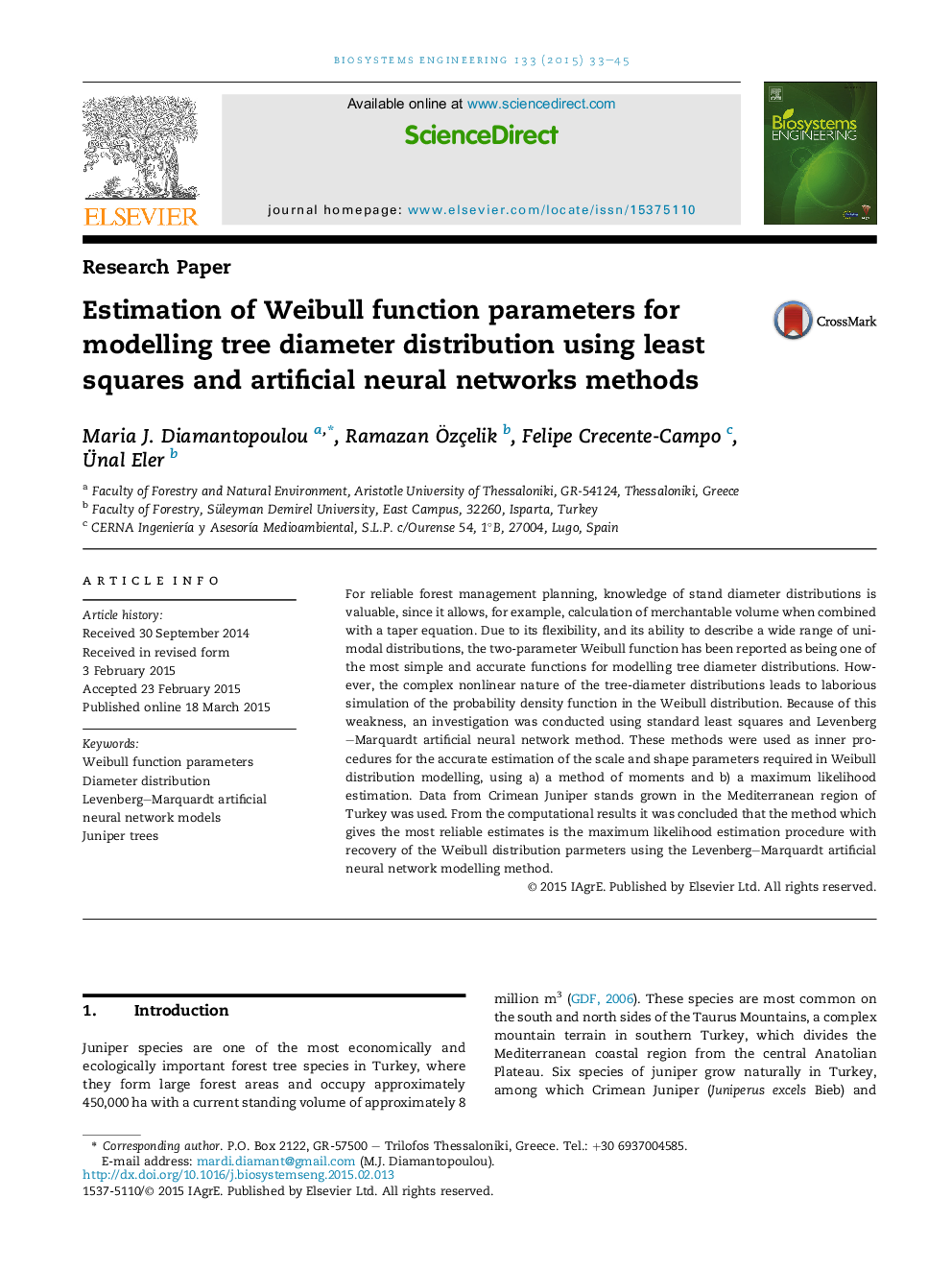| Article ID | Journal | Published Year | Pages | File Type |
|---|---|---|---|---|
| 1711032 | Biosystems Engineering | 2015 | 13 Pages |
•Weibull distribution has seen widespread use in growth and yield modelling.•Maximum likelihood estimation method outperformed the method of moments.•LMANN models outperformed regression models for parameters recovery.•The superiority of the neural models in diameter distribution modelling was clear.
For reliable forest management planning, knowledge of stand diameter distributions is valuable, since it allows, for example, calculation of merchantable volume when combined with a taper equation. Due to its flexibility, and its ability to describe a wide range of uni-modal distributions, the two-parameter Weibull function has been reported as being one of the most simple and accurate functions for modelling tree diameter distributions. However, the complex nonlinear nature of the tree-diameter distributions leads to laborious simulation of the probability density function in the Weibull distribution. Because of this weakness, an investigation was conducted using standard least squares and Levenberg–Marquardt artificial neural network method. These methods were used as inner procedures for the accurate estimation of the scale and shape parameters required in Weibull distribution modelling, using a) a method of moments and b) a maximum likelihood estimation. Data from Crimean Juniper stands grown in the Mediterranean region of Turkey was used. From the computational results it was concluded that the method which gives the most reliable estimates is the maximum likelihood estimation procedure with recovery of the Weibull distribution parmeters using the Levenberg–Marquardt artificial neural network modelling method.
